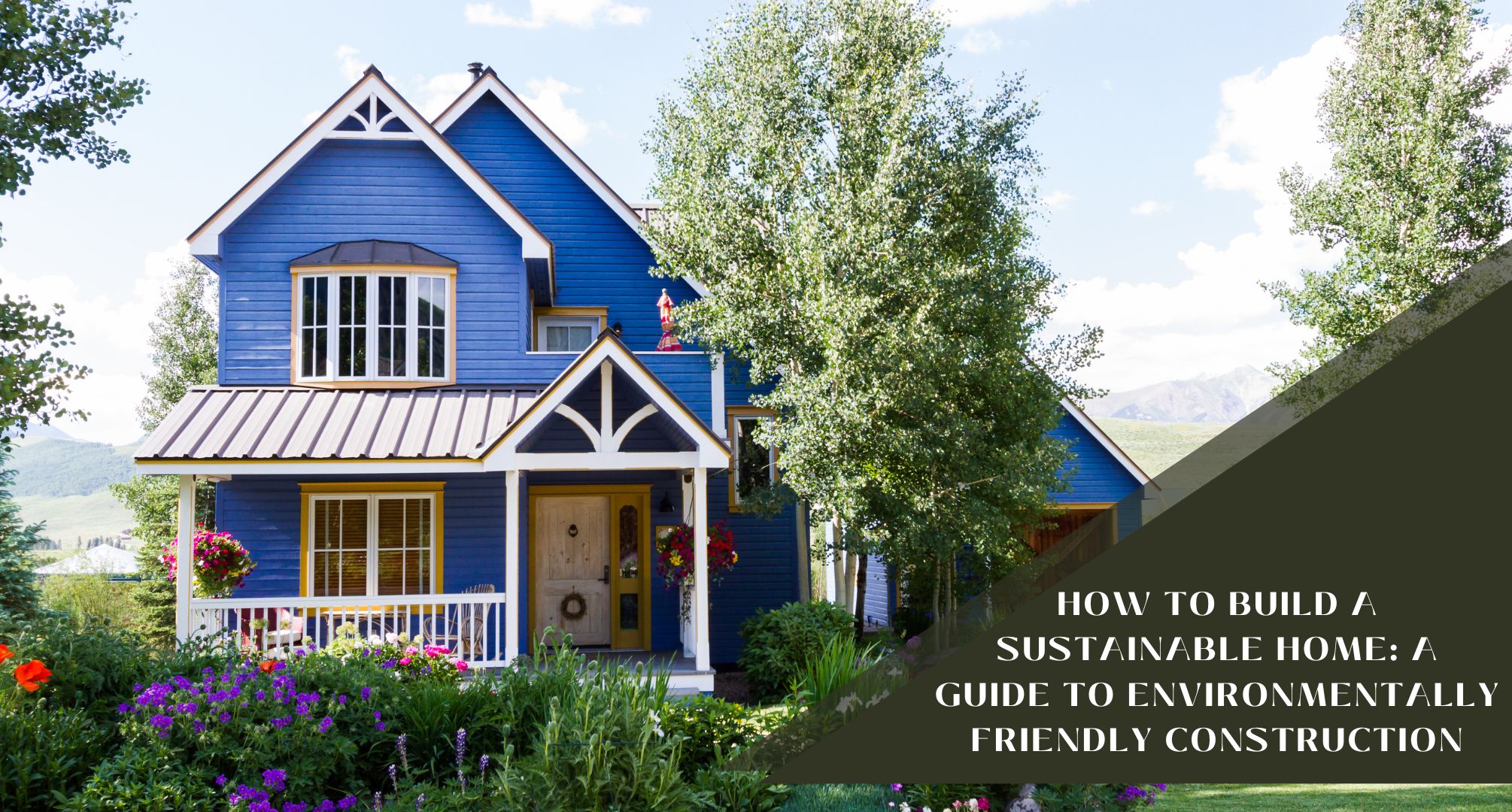Building a house is one of the largest investments that the majority of people make in their lifetime. But in today’s world, it is not enough to merely have a roof over your head; we must also consider the environmental impact of our homes. Sustainable home building is gaining popularity, and for good reason. Not only does building a sustainable home benefit the surroundings, but it can also save homeowners money over time. In this guide, we will examine the beginning-to-end process of building a sustainable residence.

Designing and Planning
Planning and design are the initial steps in constructing a sustainable residence. Before beginning construction, it is essential to evaluate the site and surrounding area. Choosing a location near public transportation and conveniences can reduce carbon emissions from commuting. Moreover, orienting the residence to maximize natural light and ventilation may decrease the need for artificial lighting and air conditioning. To reduce the harmful effects of the construction process, it is also essential to select sustainable building materials such as recycled or locally sourced materials.
Foundation and framing should also be carefully considered for a sustainable residence. Selecting sustainable framing materials, such as FSC-certified wood or bamboo, can contribute to the reduction of deforestation. Proper insulation can reduce energy consumption and save residents money on their energy bills.
Mechanical Methods
It is essential to choose the appropriate mechanical systems for a sustainable residence. Heating and ventilation systems that are energy-efficient, such as geothermal or solar-powered systems, can significantly reduce energy consumption. Incorporating sources of clean energy, such as solar panels or wind turbines, can also assist householders in producing their own electricity and decreasing their reliance on the grid.
Additionally, water-saving features, such as faucets with reduced flow and toilets, can substantially reduce water usage. Greywater systems, which collect and reuse water from sinks, showers, and laundry machines, can also be used for landscape irrigation.
Interior Surfaces
Additionally, the interior finishes of a green residence should be carefully considered. Selecting paints and finishes with minimal VOC content can decrease indoor pollution and create an improved quality of life. It is also possible to reduce the environmental impact of a residence by using bamboo or cork flooring.
Incorporating recycled and natural components into the home’s design is a fantastic way to reduce pollution and give the home a distinctive appearance. For example, countertops and backsplashes can be constructed from reclaimed wood or recycled glass.
Landscaping
Sustainable landscaping is an essential element of a sustainable residence. A sustainable landscape design involves selecting native plants that require less water and upkeep. Hardscaping elements, such as impervious pavers or gravel, can also be utilized to reduce runoff and erosion.
Using rainwater harvesting systems, such as rain barrels or cisterns, to capture water for irrigation is also possible. In addition to reducing waste and providing nutrient-rich soil for gardening, creating a compost bin for yard trimmings and food remnants can help to reduce waste.
Maintenance and Procedure
After the construction of a sustainable residence, it is essential to maintain and operate it in an eco-friendly manner. Regular maintenance, such as replacing air filters and inspecting insulation, can contribute to a home’s optimal efficiency. In addition to reducing indoor air pollution and fostering a healthier living environment, the use of eco-friendly housekeeping products can reduce indoor air pollution.
Monitoring energy and water consumption is a great method for homeowners to identify areas for improvement. Installing a programmable thermostat and utilizing energy-efficient light bulbs are also excellent ways to reduce energy costs.
Conclusion
The construction of a sustainable home requires careful planning and contemplation, but the rewards are substantial. In addition to reducing the environmental impact of our living spaces, sustainable residences save homeowners money over time by reducing energy and water consumption. By adhering to the steps enumerated in this guide, homeowners can construct a home that is not only attractive and functional, but also eco-friendly and sustainable.
As the world continues to face climate change and other environmental challenges, the importance of constructing sustainable homes is growing. By decreasing our reliance on fossil fuels and other nonrenewable resources, we can assist future generations in preserving the environment. Homeowners can positively impact the world in a variety of ways, one of which is by constructing a sustainable dwelling.
Building a sustainable residence is not always simple or inexpensive. In some instances, it may be necessary to make concessions or compromises in other aspects of the home’s design. However, the long-term benefits of sustainable home construction make it a worthwhile investment for those committed to minimizing their environmental impact and fostering a more sustainable future.
Building a sustainable home is a fantastic way to reduce the environmental footprint and save money over time. By meticulously considering the construction site, materials, and mechanical systems, homeowners can create a home that is both beautiful and environmentally friendly. By incorporating sustainable elements into the home’s design and landscaping, householders can reduce their environmental impact even after the home is constructed. Anyone can build a green house that is both practical and environmentally conscious with careful planning and consideration.
